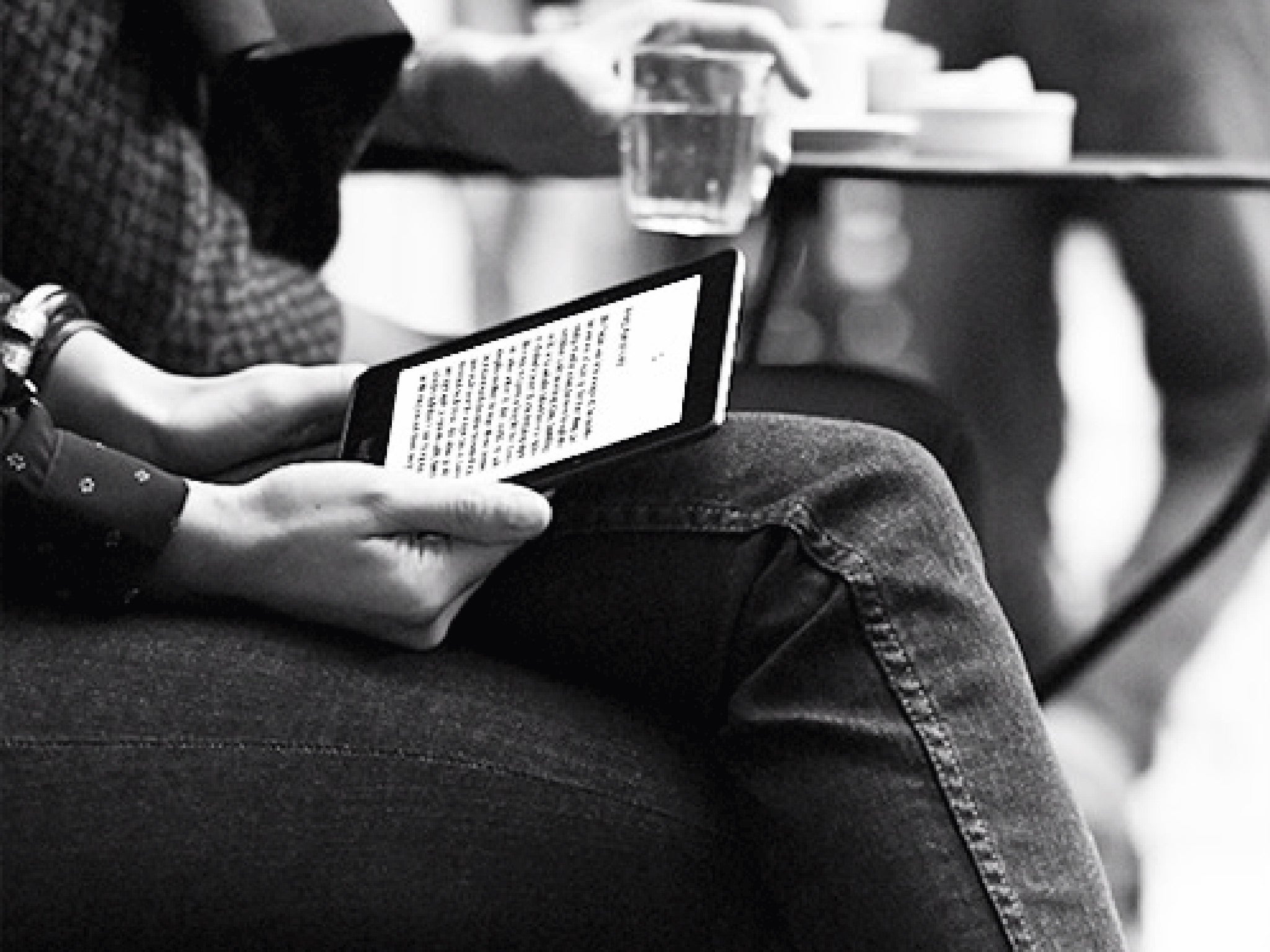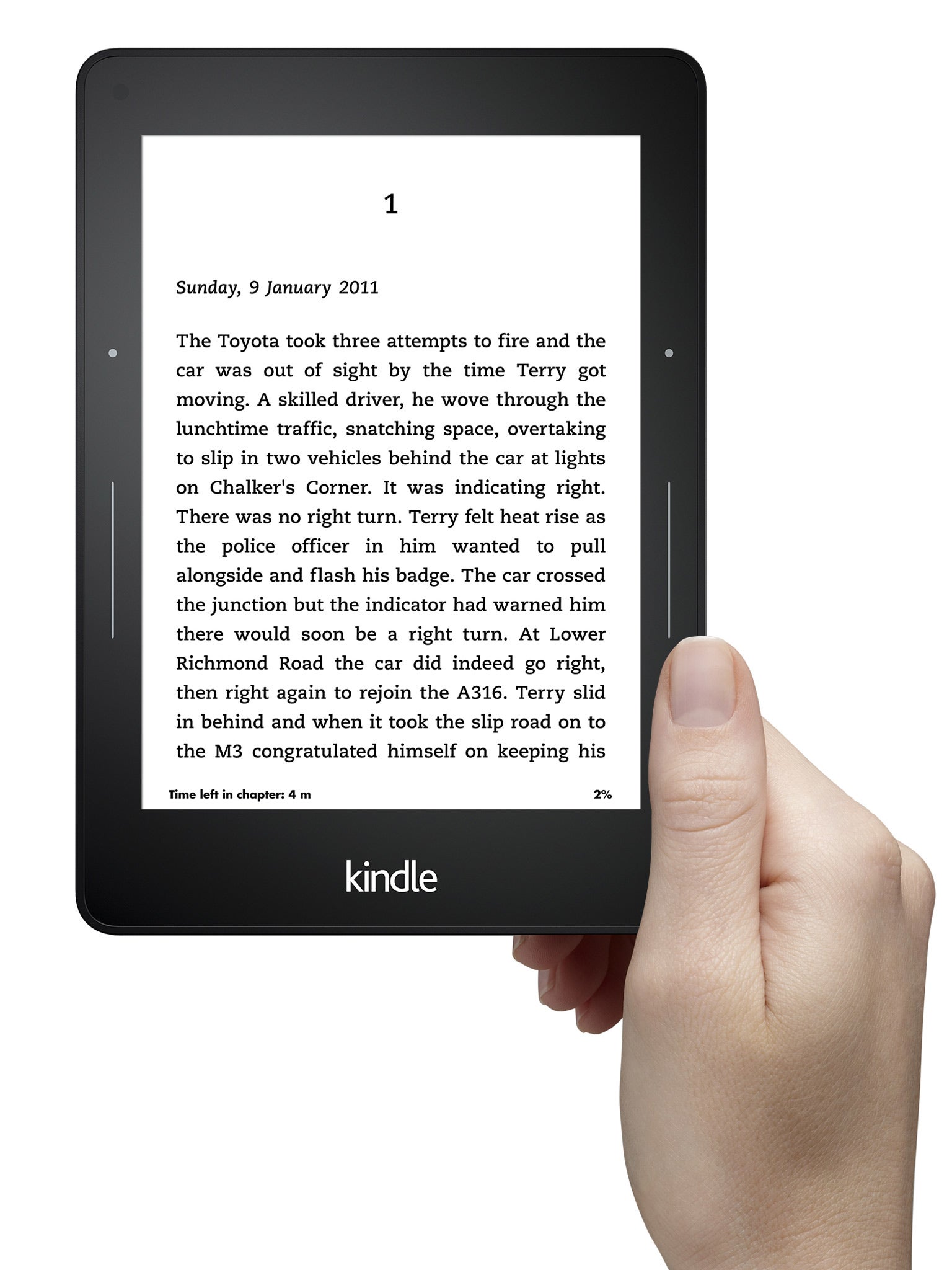Amazon Kindle Voyage review: the best way to read since books
Amazon's new Kindle gets rid of many of the irritating things about ebooks — and packs in new features, too

Your support helps us to tell the story
From reproductive rights to climate change to Big Tech, The Independent is on the ground when the story is developing. Whether it's investigating the financials of Elon Musk's pro-Trump PAC or producing our latest documentary, 'The A Word', which shines a light on the American women fighting for reproductive rights, we know how important it is to parse out the facts from the messaging.
At such a critical moment in US history, we need reporters on the ground. Your donation allows us to keep sending journalists to speak to both sides of the story.
The Independent is trusted by Americans across the entire political spectrum. And unlike many other quality news outlets, we choose not to lock Americans out of our reporting and analysis with paywalls. We believe quality journalism should be available to everyone, paid for by those who can afford it.
Your support makes all the difference.The problem with ebook readers is they’re not books. Sure, the ones that use eink instead of full colour screens come close but they lack the physicality of a book.
Mind you, recent models like the Kobo Aura HD have had such high-resolution eink displays that the text is pleasingly sharp. And the recent Nook Glowlight from Barnes and Noble improved the quality of ebook reading by entirely removing the intrusive flashing effect that happens when you turn pages.
So Amazon’s latest, the Kindle Voyage, has plenty to prove as the company’s flagship ereader.
The design tells you it’s different from the off. Where other ebook readers have a frame that stands higher than the screen, this one has a flush display, like an iPad, say. It also adopts the rear power button found on other Amazon Fire tablets.
At the edges of the frame are marks. A long line and a dot on each side – these are page forward and back areas. They’re capacitive areas, like the rest of the touchscreen – the same as found on pretty much all smartphones and tablets. This means you can’t use the Voyage with gloves on.
Since these aren’t clicky buttons such as those found on the original Kindle, the gadget lets you know it’s registered your touch by vibrating lightly (and turning the page, obviously).
The system takes getting used to – I instinctively touched the big line on the right to move forward and the line on the left to move back. It’s the dot icons that move you back a page. If you prefer, you can still use the page swipe technique used on other touchscreen ereaders and all tablets.

The display on the Voyage is sensational, easily the best I’ve seen on an ebook reader. At 300 pixels per inch, it’s the highest-resolution eink screen yet, beating even the Kobo Aura HD. That’s still not quite as pin-sharp as ink on paper, but it’s pretty good.
And unlike paper, this ereader incorporates Amazon’s Paperwhite technology. Where conventional colour tablets have backlights which are tiring on the eyes after a while, this has a frontlight that comes from one side instead of shining in your eyes. Even better, there’s an auto brightness setting which measures the ambient light and adjusts the brightness accordingly. This works well and the light is reasonably power-stingy – even with the light on the battery lasts a good month between charges.
Like other eink readers, it has the considerable advantage over backlit colour screens that it’s easy to read in bright sunlight, even through sunglasses.
Amazon hasn’t managed the Nook trick of eliminating all flashing while you’re reading a book, but it’s pretty close. I only noticed the eink flashing every 20 pages or so. None the less, there were no noticeable artefacts on this pristine screen, which can be a consequence of fewer flash effects.
There are extra features no real book can match. Of course, you can store hundreds of books with no extra weight. And there are features such as word look-up that can also deliver Wikipedia entries. Amazon’s X-Ray function gathers together mentions of characters, ideas or places so you can learn more about that book. Plus, of course, there’s the facility to change the size of the text or choose from half a dozen fonts.
This ereader isn’t cheap, but it’s easily the best on the market and the very best way to read a book. Apart from on paper, obviously.
Join our commenting forum
Join thought-provoking conversations, follow other Independent readers and see their replies
Comments